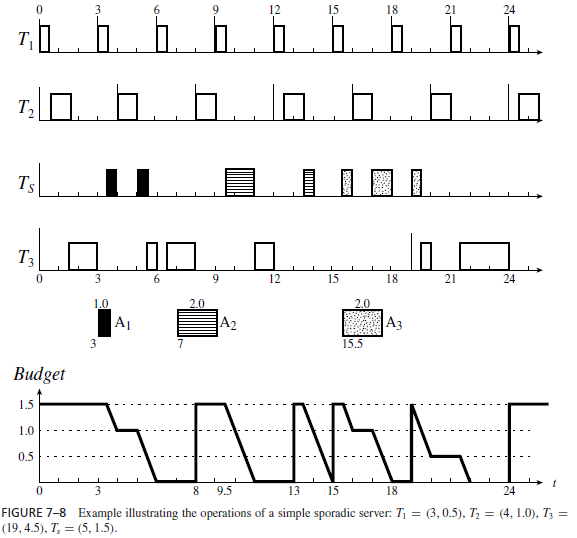SKEDSOFT

2. The server does not begin to execute until time 3.5. At the time, tr is 0, BEGIN is equal to 3, and END is equal to 3.5. According to rule R2, the effective replenishment time te is equal to max(0, 3.0) = 3, and the next replenishment time is set at 8.
3. The server executes until time 4; while it executes, its budget decreases with time.
4. At time 4, the server is preempted by T2.While it is preempted, it holds on to its budget.
5. After the server resumes execution at 5, its budget is consumed until exhaustion because first it executes (C1) and then, when it is suspended again, T1 and T2 are idle (or equivalently, END, which is 5.0, is less than the current time) (C2).
6. When the aperiodic job A2 arrives at time 7, the budget of the server is exhausted; the job waits in the queue.
7. At time 8, its budget replenished (R3), the server is ready for execution again.
8. At time 9.5, the server begins to execute for the first time since 8. te is equal to the latest replenishment time 8. Hence the next replenishment time is 13. The server executes until its budget is exhausted at 11; it is suspended and waits for the next replenishment time. In the meantime, A2 waits in the queue.
9. Its budget replenished at time 13, the server is again scheduled and begins to execute at time 13.5. This time, the next replenishment time is set at 18. However at 13.5, the periodic task system T becomes idle. Rather than 18, the budget is replenished at 15, when a new busy interval of T begins, according to rule R3b.
10. The behavior of the later segment also obeys the above stated rules. In particular, rule R3b allows the server budget to be replenished at 19.